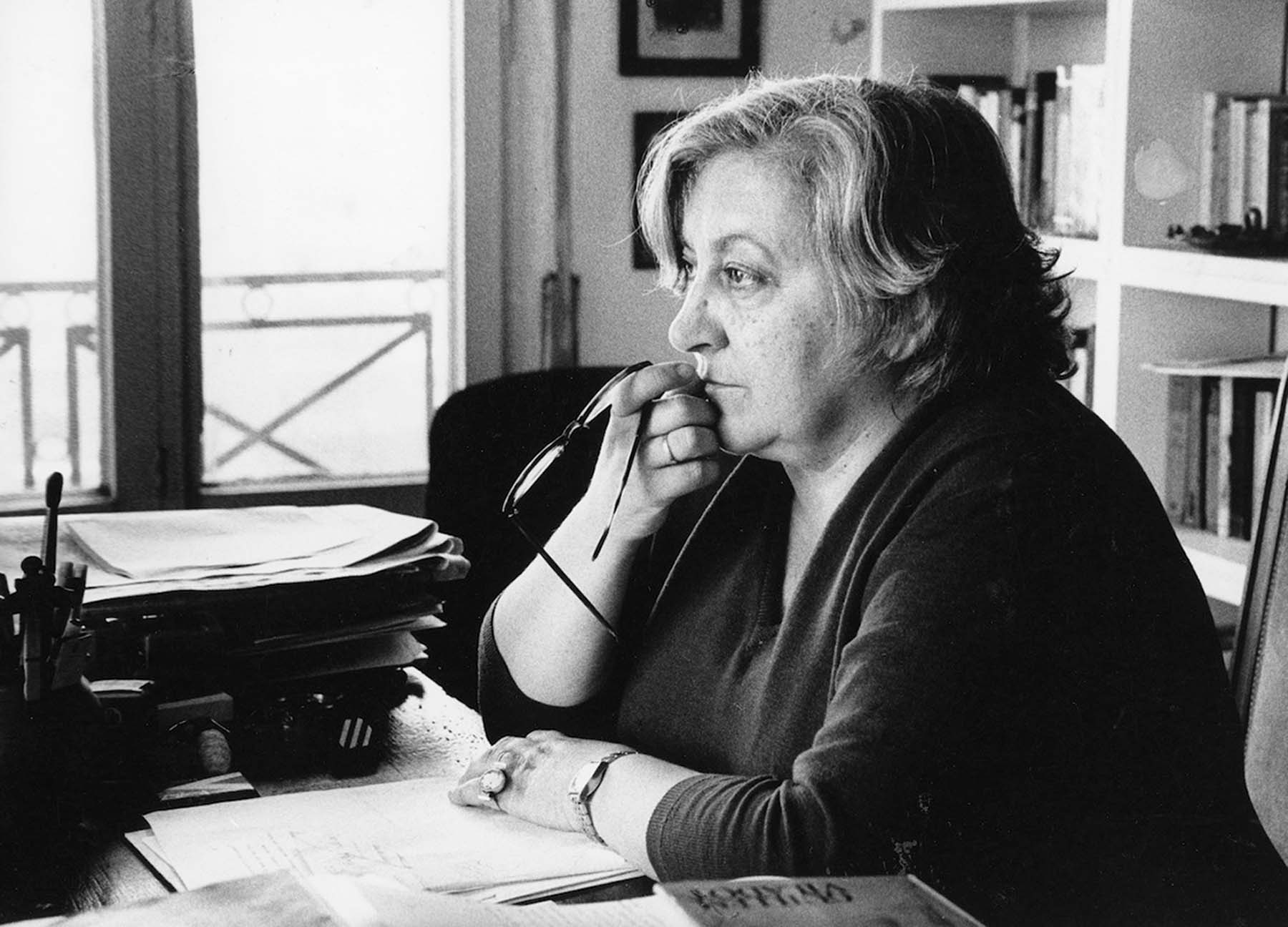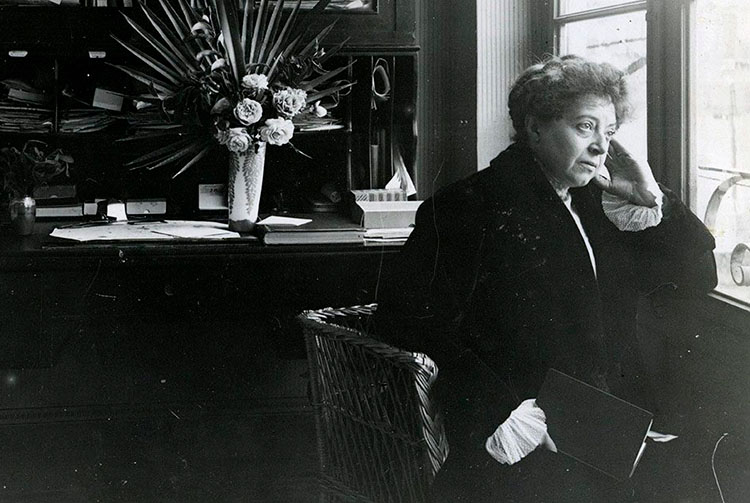

Maria Aurèlia Capmany: the right to emancipation
The sun set. A long, cold and decadent night spread across Spain for almost forty years. Finally, the guns had imposed “me over you”. But the conviction and tenacity of many women made it possible to change the situation as the century progressed. We continue with the historical exercise proposed by Oriol Garcia Farré, 11Onze agent and historian, on the history of contemporary women with the contribution of Maria Aurèlia Capmany.
The drama increased when some 500,000 people crossed the border into France between the end of 1938 and January 1939, fleeing the horror. In fact, it had been suspected for months that this would happen. The victory of fascism in Spain became a reality in April 1939, when the hopes and illusions of a social majority that had worked to create a fairer and more egalitarian society were finally dashed. From then on, peace would be imposed under the constant threat of imprisonment for dissidents against the new order.
The regime imposed by force of arms was based on national trade unionism, but after the Second World War it was forced to move towards a different conception of power in order to ensure its survival. The world that emerged after 1945 would no longer be the same as at the end of the Spanish Civil War, since historical reality would be constructed on the basis of the confrontation between the capitalist and communist countries.
It was then that Francoism decidedly opted for National Catholicism as a social articulation. Catholic rhetoric would be more acceptable to the Western allies, the winners of the world war. And the most visible manifestation of this conception of power would be the return of hegemony to the Church, which would control all aspects of public and private life in society. The state would put the clergy on the payroll and provide the Church with a broad tax exemption and, most importantly, it would once again be given absolute freedom in the management of education.
Involution of the role of women
Franco’s dictatorship would destroy all the achievements of the Republic. The Church would legitimise the redefinition of the role of women in society. Thus, Franco’s regime would put the brakes on all the female achievements of the previous period by arguing an anti-feminist discourse, in which women would be perceived as inferior to men, both spiritually and intellectually.
Under this pretext, the new regime would relegate women to household chores, as mothers and wives. Many women were repressed by the regime, especially in the period 1939-1945. Feeding, helping or curing Republican combatants was considered a crime for which many women were imprisoned, sent to concentration camps or even shot. Others, conditioned by fear, silenced their participation in the battlefields, making it a purely private memory.
Even so, the regime legitimised two youth organisations, the Women’s Section and the Youth Front, which were set up to indoctrinate all young people in the principles of the ‘movement’. In this way, the aim was to build a new society that was obligatorily articulated by the new values that underpinned Francoism.
A new political turn
Towards the end of the 1950s something began to change. The failure of the autarchy and the tense international situation, with the Cold War in the background, led the regime to a forced reorganisation of forces in the power families. The Falangists, who had dominated the political scene until then and were the guarantors of fascist symbolism and rhetoric, were replaced by young technocratic politicians linked to Opus Dei.
This change allowed the regime to generate a new ideological discourse and project a more modern social image to the outside world. In this way, ‘developmentalism’ would favour the growth of a Spanish middle class that would sustain the regime for a few more decades, but would also cause its annihilation. This controlled openness, for example, would tolerate the publication of works in Catalan, but it would also allow demands for social gender equality to be rescued from the attics of memory.
Women in Catalonia
It was in this context that Maria Aurèlia Capmany i Farnés (1918-1991) published her famous essay ‘Women in Catalonia’ (1966), one of the key works for the recovery of feminist demands in Catalonia. She was the daughter of the folklorist Aureli Capmany and Maria Farnés, and granddaughter of the journalist and Catalanist politician Sebastià Farnés. From an early age, Maria Aurèlia Capmany showed an innate ability for writing and literary activities in general. The impact of her essay allowed her to give up teaching to devote herself entirely to literary activities and theatre.
The main thesis put forward by Maria Aurèlia Capmany in ‘Women in Catalonia’ hinges on the idea that no progress can be made on the problem of gender if the social and political problems of Catalonia are not solved first. And this is written by someone who was a woman, a Catalan and a socialist. In other words, the devil for the Regime!
A palpable problem
For Capmany, the gender problem exists and is palpable within society. Her essay reveals two major problems: on the one hand, the definition of women as otherness and dependence; and, on the other, social inequalities and women’s access to the public world. In this sense, the conclusion reached by Maria Aurèlia Capmany is very clear: women have the same social status as men, but only in appearance, because the reality is that they are all aware of their lack of integration, their state of evolution and the instability of their insertion in the society in which they live.
A working woman can easily discover the objective conditions of her marginalisation, since she works the same as a man, studies the same subjects, obtains the same qualifications as a man. Still, with these qualifications, she will do a second-rate job. Therefore, if a woman wants to dedicate herself to something beyond the walls of her home, she will have to do it discreetly and without giving it any importance.
As a result, Capmany would once again put forward the thesis of the 1930s, which fiercely defends the “me just like you”. Even so, throughout her long career, first as a writer and then as a politician, she worked tirelessly for the equality and integration of women in society. Through her prolific work, she fought against the stale ultra-conservatism of the Franco regime, coming to the conclusion that the key word for women’s liberation is emancipation. As her song ‘Teatro de cabaret’ says, she was an emancipated woman who had to think and decide, solemn and sensible, and she did it from freedom and dialogue.
11Onze is the community fintech of Catalonia. Open an account by downloading the super app El Canut for Android or iOS and join the revolution!
If you liked this article, we recommend you read:
Leave a Reply
You must be logged in to post a comment.





Gràcies
Gràcies a tu, Joan, per ser-hi i per seguir-nos!!!
Estic d’acord en que el gran problema per a les dones durant el franquisme no va ser el sistema polític, sinó la “moral” del nacional catolicisme aplicada només a elles, fet que va impedir un major desenvolupament de la societat en general.
Correcte, Mercè! Realment un desgavell social que es trigarà força dècades a superar! Seguim a La Plaça.
Exacte!
Un gran article 👏👏👏
Gràcies, Manel per llegir-nos! Esperem que els següents també t’agradin. Seguim a La Plaça!
Moltes gràcies Manel